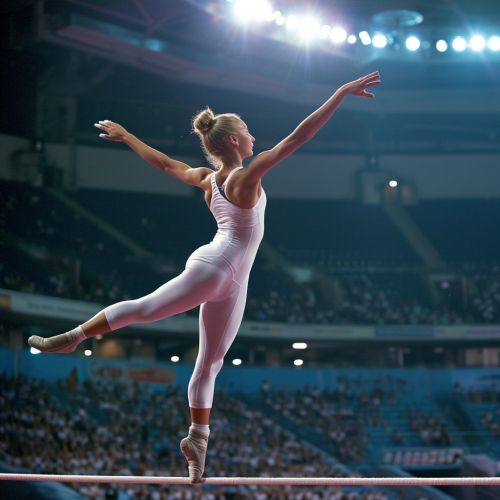Gymnastics at the Summer Olympics
History
Gymnastics as a sport has a long history, dating back to ancient Greece. However, it was not until the modern Olympic Games were established in 1896 that gymnastics was included as an official event. The first gymnastics events at the Olympics were men's events, with women's gymnastics not being added until the 1928 Summer Olympics in Amsterdam.


Men's Events
Men's gymnastics at the Summer Olympics includes six different events: the floor exercise, pommel horse, rings, vault, parallel bars, and horizontal bar. Each event requires a unique set of skills and abilities, and gymnasts often specialize in one or two events.
Floor Exercise
The floor exercise in men's gymnastics involves a routine performed on a 12m x 12m spring floor. The gymnast has 70 seconds to complete their routine, which must include elements of tumbling, flexibility, strength, and balance. The routine is scored based on difficulty, execution, and artistry.
Pommel Horse
The pommel horse is a unique apparatus in men's gymnastics, requiring a high degree of upper body strength and coordination. The gymnast performs a continuous series of circular movements and scissors movements, all while keeping their body elevated above the horse.
Rings
The rings event in men's gymnastics requires immense strength and control. The gymnast performs a routine of strength elements, swings, and handstands, all while keeping the rings as still as possible.
Vault
In the vault event, gymnasts sprint down a runway, jump onto a springboard, and perform flips and twists off a vaulting table. The vault is scored based on the difficulty of the vault, the height and distance achieved, and the landing.
Parallel Bars
The parallel bars event involves a routine of swings, balances, and releases. The gymnast must move between the two bars, maintaining a continuous flow of movement.
Horizontal Bar
The horizontal bar event is often considered the most exciting event in men's gymnastics. The gymnast performs a series of swings, releases, and catches, often including multiple flips and twists in the air.
Women's Events
Women's gymnastics at the Summer Olympics includes four events: the vault, uneven bars, balance beam, and floor exercise. Like the men's events, each event requires a unique set of skills and abilities.
Vault
The vault in women's gymnastics is similar to the men's event. The gymnast sprints down a runway, jumps onto a springboard, and performs flips and twists off a vaulting table.
Uneven Bars
The uneven bars event in women's gymnastics involves a routine of swings, releases, and catches on two bars of different heights. The gymnast must transition between the two bars, maintaining a continuous flow of movement.
Balance Beam
The balance beam event requires a high degree of balance and precision. The gymnast performs a routine on a beam that is only 10cm wide, including elements of tumbling, leaps, turns, and balances.
Floor Exercise
The floor exercise in women's gymnastics is similar to the men's event, but also includes elements of dance and choreography. The gymnast performs a routine to music, incorporating elements of tumbling, flexibility, and balance.
Scoring
Gymnastics at the Summer Olympics is scored using the Code of Points, a system developed by the International Gymnastics Federation (FIG). The Code of Points includes two scores: the difficulty score and the execution score. The difficulty score is based on the complexity of the elements in the routine, while the execution score is based on how well the routine is performed.
Notable Olympic Gymnasts
There have been many notable gymnasts who have competed at the Summer Olympics. Some of the most decorated include Simone Biles, Vitaly Scherbo, and Larisa Latynina.
